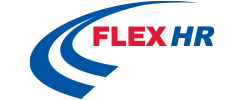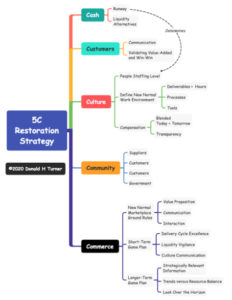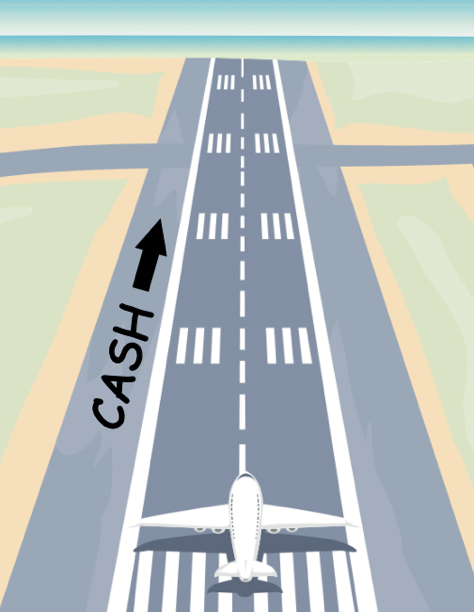Company Restoration in the New Normal – 5 C’s Restoration Strategy
By: Guest Writer Donald H Turner, Serial Turnaround and Growth Executive
 In Part 2, we discussed the underlying factors of the New Normal that will force a more intense way of looking at fixing companies that have been broken by this global calamity. Building off of Restructuring and Turnaround approaches, we identified the increased difficulty and complexity associated under the New Normal and introduced the concept of “Restoration.” Restoration efforts will require fixing distressed businesses in an environment where not only they themselves, but their entire marketplace – customers, suppliers, lenders, etc – are distressed also.
In Part 2, we discussed the underlying factors of the New Normal that will force a more intense way of looking at fixing companies that have been broken by this global calamity. Building off of Restructuring and Turnaround approaches, we identified the increased difficulty and complexity associated under the New Normal and introduced the concept of “Restoration.” Restoration efforts will require fixing distressed businesses in an environment where not only they themselves, but their entire marketplace – customers, suppliers, lenders, etc – are distressed also.
We suggested this will require an evolution of traditional Restructuring and Turnaround perspectives and approaches to successfully restore a troubled business back to prosperity.
In this third part of our series, we introduce the first three of five activity topics we suggest should be addressed when restoring a business in the New Normal. The topics of cash, customers, and culture – are shown in the following exhibit:
Before we go into further detail for each of these topics, a couple of important thoughts:
- First and foremost, these activities don’t happen in isolation. There are strong interrelationships and interactions between them.
- Secondly, given the interrelationships they must all be executed simultaneously with an eye to integrating and balancing focus and resources.
- Thirdly, are there other activities to execute? Certainly, however, I believe they can all be covered under one of these 5 C’s.\
Let’s take a look at the first three:
1. Cash
Cash combined with courage in a time of crisis is priceless
~ Warren Buffet
The proverbial “Cash is King” saying is never more relevant than it is today. For a company to restore itself and survive they must determine how much liquidity runway they have at the current burn rate, most likely under various pessimistic to optimistic scenarios.
These scenarios take into account your entire value chain – from Suppliers to Customers – and are based on the multitude of creative cash optimization tactics one can employ.
Not enough runway? Then obviously some hard decisions must be made. The point is that as we enter the first phase of the New Normal, we need to determine how much runway the company has. The length of the liquidity runway dictates both the urgency and types of decisions to be made.
Anybody who has done Turnarounds knows the endless variety of decisions that can be made to improve liquidity. We won’t go through all of them here but suffice it to say your initial Restoration decisions will almost always involve prioritization and retraction. You must prioritize those activities and resources that are a MUST HAVE to restore the business. Based on that prioritization you need to identify where retraction makes sense, at least in the short-term. As mentioned in Part 2 of our discussion, this retraction might include determining what customers you can’t serve, what products or services you can’t offer, what delivery channels are superfluous, what resources (both in personnel and facilities) are not absolutely necessary.
Remember this retraction requires focus and that focus is on the “Delivery Cycle,” or those activities directly associated with selling, delivering, and servicing your offering. These are all customer-facing and have a direct and immediate impact on your revenue. Longer-term activities like identifying and creating new offerings associated with the “Development Cycle” can wait.
Cash is also important to identify creative ways of extending or even using non-cash transactions. Again, mentioned in a previous part of our discussion, some of the obvious ways are bartering and consignment. However, I also expect to see in the early stages of the New Normal businesses negotiating concurrently with both the supplier and customer side of their business to ensure optimal cash flow. Remember, EVERYONE is in the same boat and has a common objective of survival. If there ever was a time to conduct creative transactions now would be the time.
2. Customers
Without customers there is no business to restore.
In the New Normal you will find yourself engaging with your customers more honestly, period. Restoring your business alongside with your customer restoring their business will require a new level of transparency and openness in your discussions.
In the New Normal, customer communication will take on an entirely new level of importance. Embrace it, this is a good thing in the long run.
My personal and professional hero has always been my Grandfather. He started me off in the world of business by reading Horatio Alger to me as a child sitting on his lap (while listening to Eddie Cantor records, I remember the time fondly and well). He had me work in his real estate and construction office before I was ten, driving our supply truck to deliver material to the crews as soon as my feet could reach the gas pedal, clutch, and most importantly, the brake. My fundamental view of business, hard work, and dealing with people in general all came from him. Ahhh, but that is another story.
I remember one of the most profound things he ever said. After meeting with someone in his office where I was allowed to sit in the corner, keep my mouth shut, listen, and watch, he once said, “You know Donny, 95% of all the problems you could ever have with a Customer are based on poor communication. The other 5% is rounding error.”
As I said, Grandpa was a wise man.
In the early stage of Restoration, you cannot over communicate with your customers. Yet, in the New Normal you should do be doing more than just communicating. You should be interacting, engaging, finding new ways of working together, new definitions of mutual benefit. In the New Normal your customers will exhibit a level of vulnerability that you’ve never seen before. Use this time to strengthen your relationship with them.
Evolve the value intentions between the two of you. How can delivery costs be reduced? Can packaging be done differently? Can services be bundled? These and many questions should be asked in an attempt to creatively increase the real value between you and your customer.
Of course, in the New Normal if your business offering is not as important to your customer as it was before, or worse yet, no longer relevant to them than you have a fundamental concern problem. Remember, without a clear value proposition you simply aren’t relevant to your customer. They are restoring their own business with the same intense concentration on prioritization and retraction.
3. Culture
Collectively, people are your culture and it is culture that helps drive business success.
Yes, your people are valued individuals. However, even more importantly, as a group they represent the culture of your organization and in the New Normal that culture will require a new perspective on how to effectively manage.
It is your collective culture that creates the customer experience as it defines, creates, and delivers your offering to the marketplace. Better culture, better offerings, better delivery, better customer loyalty. I have strong opinions of loyalty versus satisfaction. For a great read, “Customer Satisfaction is Worthless Customer Loyalty is Priceless” by Jeffrey Gitomer, will radically change your view of satisfaction.
Let us get the unpleasant stuff out of the way first. You may have to downsize. In fact, you most likely already have and will downsize even more as you restore your business. One strong suggestion is cut as much as you think you need for the foreseeable future. Nothing destroys culture like a Damoclean sword over everyone’s head. Once you conduct a reduction-in-force (RIF) you need to start rebuilding the team culture.
Yes, part of this RIF from the reduced level of your present business. However, it is hoped that during this current isolation phase of the New Normal, you are learning how to do more with less via effective use of technology and processes. This is an unpleasant reality but if you haven’t already figured this out, you haven’t been paying attention. Jim Cichanski, CEO of Flex HR adds, “Don and I have reorganized many companies together. He is right. Do a RIF – one and Done. Cutting employees every month sends a tiring message and may trigger your great employees to leave.”
That brings us to our second point, defining the New Normal work environment. If your management style hasn’t in the past, I hope it is now evolving to focus on deliverables, not hours. Yes, there are certain jobs that are fundamentally based on hours, such as customer service representatives. Yet, there are countless other jobs where the number of hours you put in are not as important as the deliverables you produce. That is an essential change in perspective for a lot of Managers who must learn to thrive in that environment. I envision remote working to be a seminal change in the New Normal. Do we still need offices? In many cases the answer is yes. However, do we need as much space and do our employees need to be in there five days a week, eight hours a day? I don’t think so.
Technology will help enable a lot of the New Normal. Remote team management tools have been around for a while and continue to grow in their adoption. Video conferencing will evolve. Electronic whiteboards will be the norm for team brainstorming. Workflow management solutions will increase the velocity of deliverables through an organization. We will find that effective use of technology will not only enable business in the New Normal but progress and enhance it like never before.
One positive of the New Normal is that there will be shorter, more focused meeting interactions. I have had several executives tell me of late that what would have been an in-office meeting of an hour to an hour and a half was done via a video conference in half an hour. They even felt more was accomplished.
When I worked in major corporations, I always told my team that independent of emergency meetings that are occasionally required, they had my permission to completely ignore any meeting request that did not include an objective, an agenda, and an expected deliverable 24 hours in advance of the meeting. It is amazing to see the increased meeting productivity simply having those items identified ahead of time. Maybe even include “prep work” prior to the meeting (it may worth your time research the meeting culture of Amazon via Jeff Bezos – something to be said for it).
By the way, unless it is a general presentation, during a working meeting anybody that hasn’t had anything to say probably shouldn’t have been invited anyway. They can read the meeting summary later; don’t waste their time. Remember, this is ‘live or die’ focus time.
During this same time, you should be looking at how you reengineer your processes i.e., simplify, streamline, make more efficient, more effective. The best time to reengineer processes is when you have to because that is when the organization puts up the least resistance to change.
Critical question going forward is how to compensate employees when cash is limited. You will likely have to be creative with the employees you retain. Some form of a reduced pay with a clear game plan for making them whole sometime in the future through future cash flow or equity. However, no creative payroll strategy will work without a new level of transparency into the financial realities of the business. That said, you would be surprised how many employees when given the ‘naked truth’ of a company status will nod their heads and say, “okay, I understand, let’s make this work.” Who knows, you might build an even stronger, more cohesive, more dedicated, more productive culture as you continue your Restoration.
There is a bond that is created between those who suffer together. Between those who face life changing events together. Who lay it on the line together. They call it
Foxhole Friendships.
At this point, I’m hoping that there are no surprises on what will be required for restoring business in the New Normal. Yes, it will be difficult; most likely excruciatingly so. If there is any consolation in what we all will be facing it is that: a) we will be doing it together; and b) for those of us who successfully restore our businesses and survive we will be undoubtedly stronger for it.
The next article will finish the 5C’s of Restoration strategy: Community and Commerce. Stay tuned.
* Information contained on this page is provided by Donald H. Turner, an independent third-party content provider. Flex HR makes no warranties or representations in connection therewith.
Flex HR specialists serve thousands of different organizations, in countless industries, with company sizes varying from a few to over 75,000 employees. They offer many levels of services including HR consulting, outsourcing (HRO), compliance, recruiting & talent acquisition, training & development, and onboarding administration.
Flex HR serves almost every industry in all 50 states, including Georgia, Florida, California, North Carolina, and Tennessee, as well as Puerto Rico, the Virgin Islands, Canada and Europe supporting U.S. subsidiaries of foreign owned companies.
Our Flex HR specialists serve thousands of different organizations, in countless industries, varying from a few to over 75,000 employees.
To Learn More about Flex HR Contact Us.
* Statistics and government guidance are rapidly changing. This is the most updated information as of the morning of 4/24/20. Small business is defined as under 500 employees.





